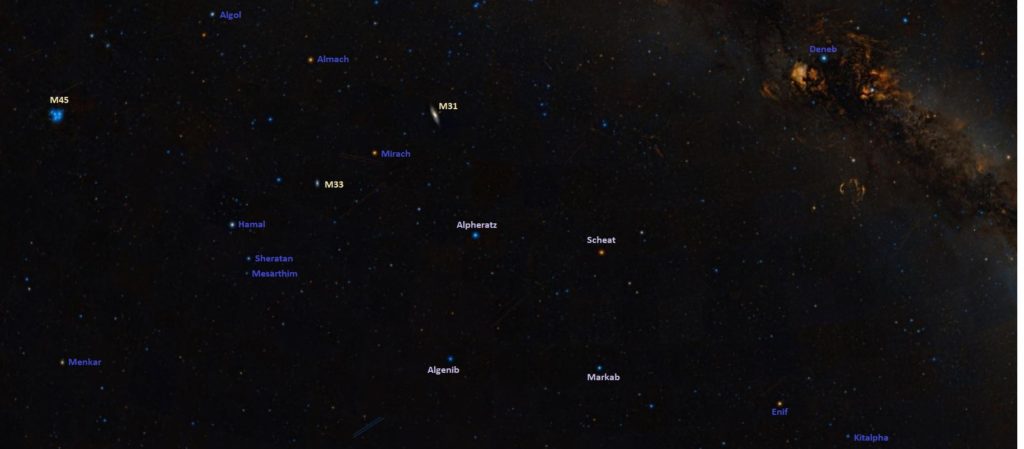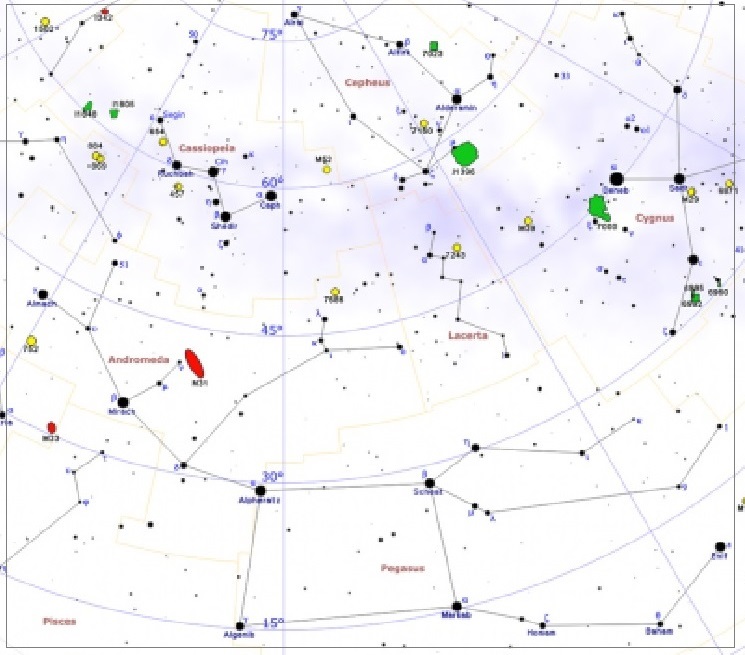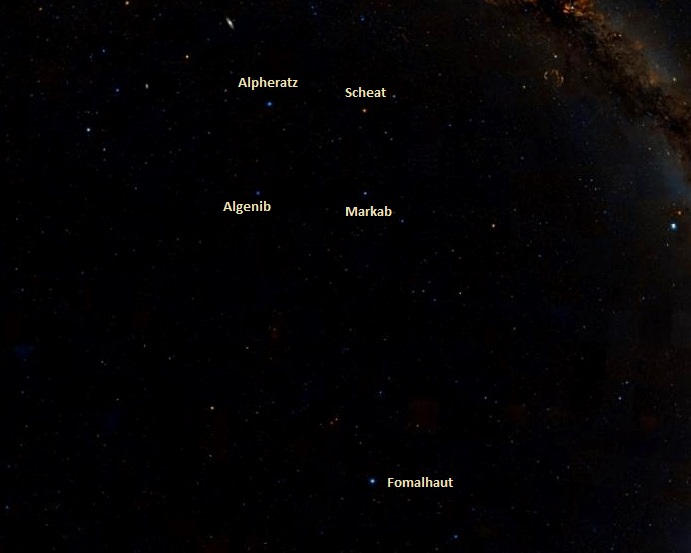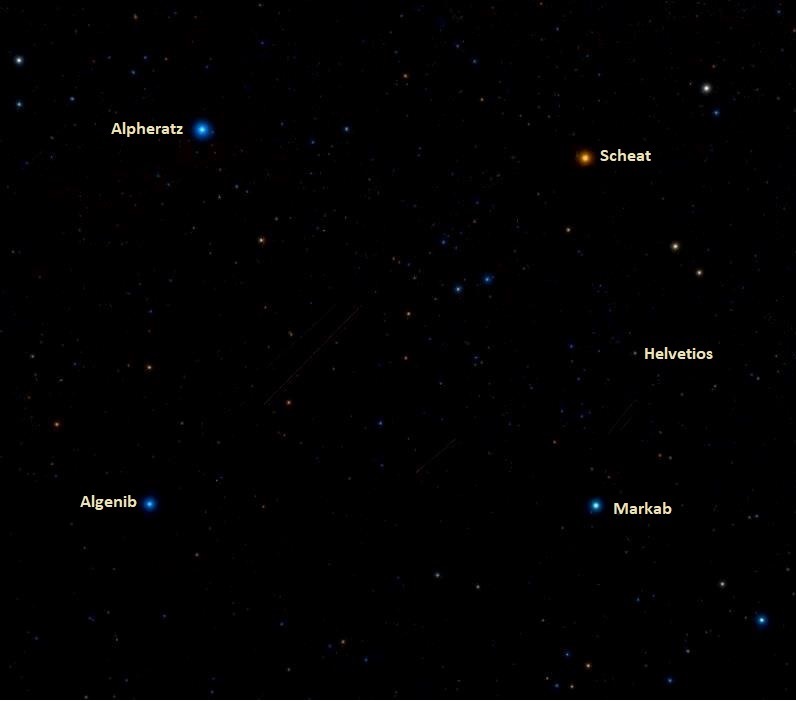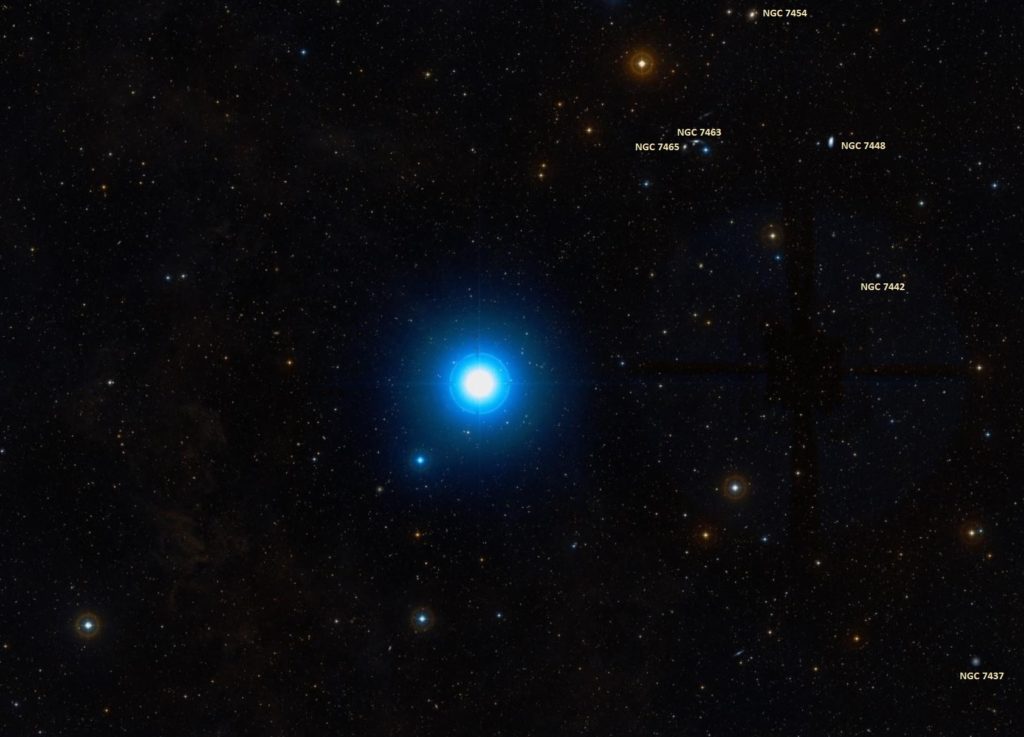Markab, Alpha Pegasi (α Peg), is a giant or subgiant star located in the constellation Pegasus. Even though it has the designation Alpha, it is only the third brightest star in the constellation, after Enif and Scheat. Markab has an apparent magnitude of 2.48 and lies at a distance of 133 light years from Earth. Together with the brighter Scheat and Alpheratz and the fainter Algenib, it forms the Great Square of Pegasus, a prominent northern asterism that marks the main body of Pegasus.
Star type
Markab is classified either as a giant star of the spectral type B9III or a subgiant of the type A0 IV. The star is running out of the supply of hydrogen at its core, if it has not already, and has expanded to a size of 4.72 solar radii. It will continue to expand and eventually evolve into an orange giant.
Markab has a surface temperature of about 9,765 K and is over 200 times more luminous than the Sun. It is a rapid spinner, with a projected rotational velocity of 125 km/s.
With a mass about three times that of the Sun, Markab is not massive enough to be a supernova candidate. Instead, it will end its life as a massive white dwarf after casting off its outer layers into space to form a planetary nebula.
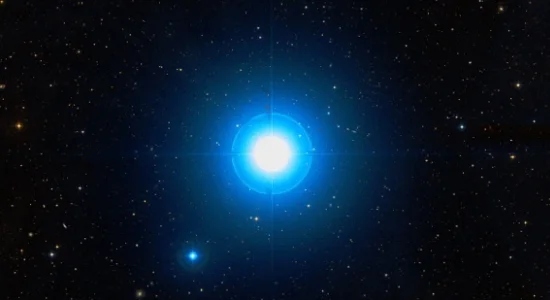
Markab (Alpha Pegasi), image: Wikisky
Facts
Markab and Enif, Pegasus’ brightest star, are among the 58 bright stars that have a special status in the field of celestial navigation. Navigational stars are among the brightest and most recognizable stars in the sky. They include 19 first-magnitude stars, 38 second-magnitude stars and Polaris, the North Star. The stars were selected by Her Majesty’s Nautical Almanac Office (HMNAO) and the US Naval Observatory (USNO) for The Nautical Almanac, a yearly publication for use by the UK and US navies, jointly published by HMNAO and USNO since 1958.
Markab is one of the four bright stars that form the Great Square of Pegasus, an asterism that takes up much of the eastern portion of Pegasus constellation. The other three stars that mark the vertices of the Great Square are Algenib (Gamma Pegasi), Scheat (Beta Pegasi), and Alpheratz (Alpha Andromedae). The asterism outlines the body of the celestial winged horse and is very useful in finding a number of other stars and deep sky objects.
Name
The name Markab (pronunciation: /ˈmɑːrkæb/) is derived from the Arabic markab, from a phrase meaning “the saddle of the horse.” It may also be a mistranscription of Mankib, which comes from the phrase Mankib al-Faras, meaning “the shoulder of the horse.”
The name was approved by the International Astronomical Union’s (IAU) Working Group on Star Names (WGSN) on June 30, 2016.
In Arabic astronomy, Markab was also known as Matn al Faras, “the horse’s withers/shoulder.” The 17th century German astronomer Johann Bayer called the star Yed Alpheras, meaning “the forearm/hand of the horse.”
The Chinese know Alpha Pegasi as 室宿一 (Shì Xiù yī), meaning “the First Star of Encampment.” Markab forms the Chinese Encampment mansion with its Great Square neighbour Scheat. Encampment is one of the seven mansions of the Black Tortoise.
Location
Markab is very easy to identify because it is part of the Great Square of Pegasus, a conspicuous pattern visible for most of the year from northern latitudes. Markab marks the southwestern vertex of the Great Square, which can be found using the bright stars that form Cassiopeia’s W. A line extended from Segin, Epsilon Cassiopeiae, through Ruchbah, Delta Cassiopeiae, points in the general direction of the asterism.
Markab and its neighbour Scheat can be used to find two interesting stars, Fomalhaut and 51 Pegasi (Helvetios). Nicknamed “the Eye of Sauron” for its large circumstellar debris disk, Fomalhaut (Alpha Piscis Austrini) is the 18th brightest star in the sky. Despite its brightness, it is difficult to identify because it is isolated in a region that does not contain any other exceptionally bright stars. The star can be found by extending a line from Scheat through Markab. It is the brightest star that appears on the imaginary line.
51 Pegasi is notable for being the first Sun-like star discovered to have an orbiting exoplanet. Significantly fainter at magnitude 5.49, the star can be found in the area between Markab and Scheat.
There are several faint galaxies located in the same field of view as Markab. They belong to the NGC 7448 Group, centered on the magnitude 11.4 spiral galaxy NGC 7448, and include NGC 7437, NGC 7454, NGC 7463, and NGC 7465.
Constellation
Markab is located in the constellation Pegasus. Representing the mythical winged horse, Pegasus is the seventh largest of all 88 constellations, covering an area of 1,121 square degrees. Like other constellations associated with figures from Greek mythology, it is one of the Greek constellations, first listed by the 2nd century CE Greek astronomer Claudius Ptolemy in his Almagest. Pegasus belongs to the Perseus family of constellations, which includes several other constellations associated with the mythical Greek hero: Perseus, Andromeda, Cassiopeia, Cepheus, and Cetus. In mythology, Pegasus sprang from the neck of Medusa after Perseus beheaded her.
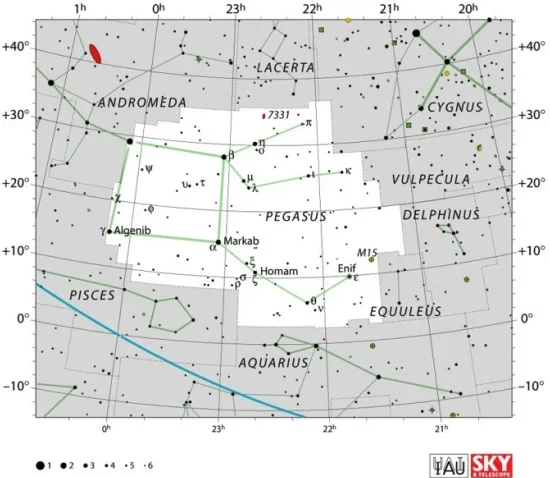
Pegasus constellation map by IAU and Sky&Telescope magazine
The constellation Pegasus is home to many interesting deep sky objects. The best known ones include the Great Pegasus Cluster (Messier 15), one of the brightest and oldest known globular clusters, the unbarred spiral galaxy NGC 7331, the brightest member of the NGC 7331 Group, the compact galaxy group catalogued as Hickson 92 (HCG 92) and also known as Stephan’s Quintet, the spiral galaxies NGC 7479 (the Propeller Galaxy), NGC 7742 (the Fried Egg Galaxy) and the Little Sombrero Galaxy (NGC 7814), and the gravitationally lensed quasar known as Einstein’s Cross.
The best time of year to see the stars and deep sky objects of Pegasus is during the month of October, when the constellation is prominent in the evening sky.
The 10 brightest stars in Pegasus are Enif (Epsilon Peg, mag. 2.399), Scheat (Beta Peg, mag. 2.42), Markab (Alpha Peg, mag. 2.48), Algenib (Gamma Peg, mag. 2.84), Matar (Eta Peg, mag. 2.95), Homam (Zeta Peg, mag. 3.414), Sadalbari (Mu Peg, mag. 3.514), Biham (Theta Peg, mag. 3.52), Iota Pegasi (mag. 3.77), and Lambda Pegasi (mag. 3.93).
Markab – Alpha Pegasi
| Spectral class | A0 IV or B9III |
| Variable type | Suspected |
| U-B colour index | –0.06 |
| B-V colour index | –0.04 |
| Apparent magnitude | 2.48 |
| Distance | 133 ± 1 light years (40.9 ± 0.3 parsecs) |
| Parallax | 24.46 ± 0.19 mas |
| Radial velocity | -2.2 km/s |
| Proper motion | RA: 60.40 ± 0.17 mas/yr |
| Dec.: -41.30 ± 0.16 mas/yr | |
| Mass | cca. 3 M☉ |
| Radius | 4.72 ± 0.14 R☉ |
| Temperature | 9,765 ± 63 K |
| Metallicity | −0.02 ± 0.10 dex |
| Rotational velocity | 125 km/s |
| Surface gravity | 3.51 ± 0.03 cgs |
| Constellation | Pegasus |
| Right ascension | 23h 04m 45.65345s |
| Declination | +15° 12′ 18.9617″ |
| Names and designations | Markab, Alpha Pegasi, α Peg, 54 Pegasi, HD 218045, HR 8781, HIP 113963, FK5 871, SAO 108378, BD +14°4926, PPM 142158, GC 32149, GCRV 14477, ALS 16176, AAVSO 2259+14B, IRAS 23022+1456, PLX 5587, 2MASS J23044565+1512191, TYC 1711-2475-1 |
